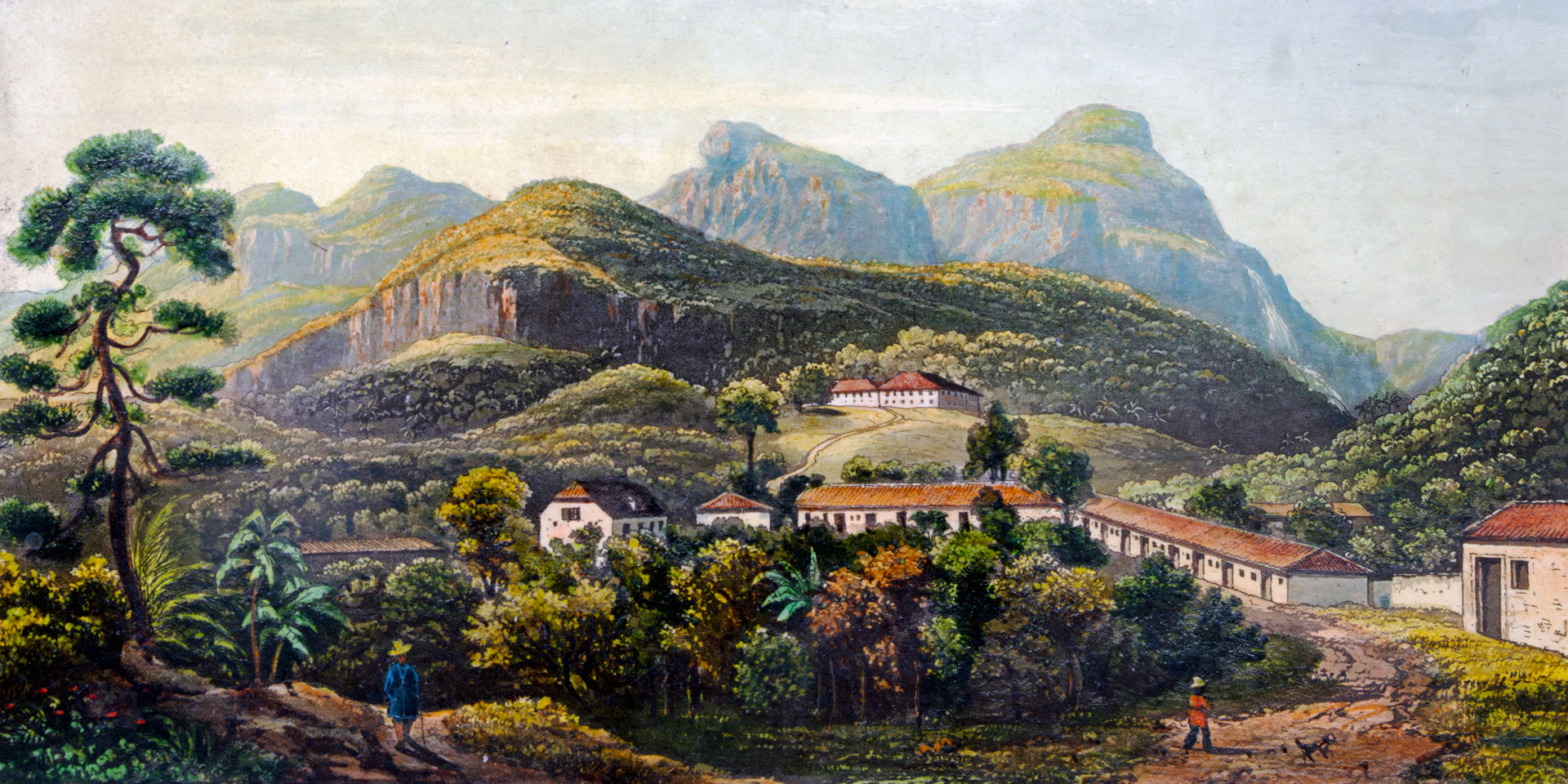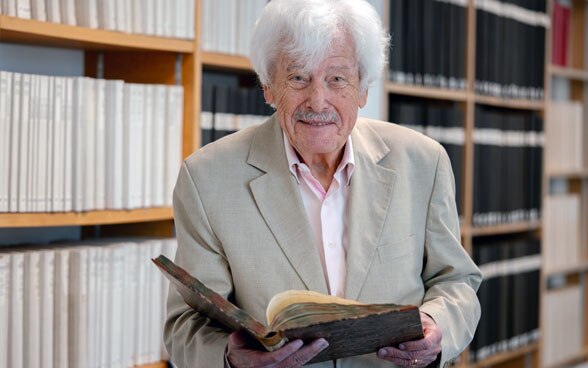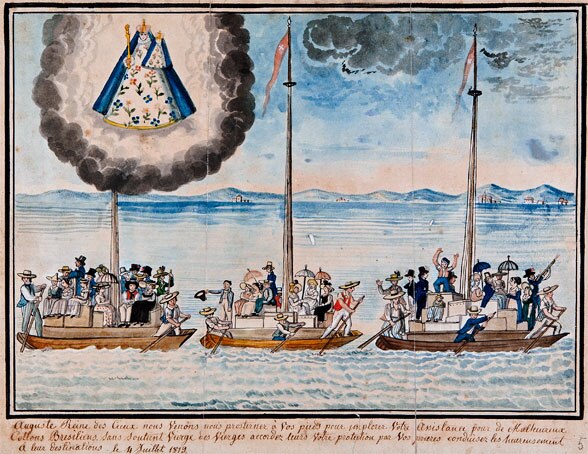Nova Friburgo, Nueva Helvecia and Baradero: rediscovering the story of Swiss emigration to South America in Solothurn
A chapter of history between Switzerland and Brazil was highlighted during the official meeting of Swiss Federal Councillor Ignazio Cassis with Brazilian Foreign Minister Mauro Vieira on 30 April 2024. Mr Vieira is indeed a descendant of Swiss emigrants who settled in the Swiss colony of Nova Friburgo at the beginning of the 19th century. Let's revisit the history and circumstances of Swiss emigration to South America, and how it unfolded.

In 1839, the Swiss painter Johann Jacob Steinmann gave the world one of the first images of Nova Friburgo, showing the emigrants' rudimentary houses. © Fribourg, private archives
In July 1819, Viktor and Josef Jecker left Erschwil, in the canton of Solothurn, with their family, heading for the future colony of Nova Friburgo, Brazil. Over 200 years after this emigration, Brazilian Foreign Minister Mauro Vieira, a descendant of the Jeckers from Erschwil, is back in Switzerland. His Swiss origins are indeed engraved in his full name: Mauro Luiz Iecker Vieira. On 30 April 2024, he met with Federal Councillor Ignazio Cassis as part of an official visit. Two hundred years of Swiss-Brazilian history and ties between the two countries were revived, explored and celebrated at this meeting in Solothurn.
The Jeckers were among the 2,000 or so Swiss who left for Brazil in July 1819. Most of them were from Fribourg (around 800), but there were also people from Valais, Jura, Lucerne, Aargau and Solothurn. Why cross the Atlantic to settle in South America? "The beginning of the 19th century in Switzerland was marked by years of misery, known as the sunless years, which followed the explosion of a volcano in Indonesia in 1815," explains Fribourg historian Martin Nicoulin, author of the book La Genèse de Nova Friburgo (The origins of Nova Friburgo).

Basel, the Netherlands, Brazil
In Switzerland, the cantonal authorities were looking for solutions. In Fribourg, the government of the time was envisaging emigration to Brazil. It sent Sébastien-Nicolas Gachet from Gruyères to negotiate with representatives of King John VI of Portugal, in exile in Rio. In May 1818, the king signed a decree authorising the founding of the colony of Nova Friburgo. The groundwork was laid and things started to take shape. The gathering point for the grand departure to Brazil was set in Basel, where the emigrants boarded seven ships. After a stop at a camp in Dordrecht, the Netherlands, they set off to cross the Atlantic. "The ships were generally overcrowded and the conditions aboard were harsh. Storms and diseases marked this gruelling Atlantic crossing, which nearly 400 of the 2,000 people who left Switzerland did not survive," says Dr Nicoulin.

After a journey lasting several months, the Swiss emigrants reached Brazil, stopping near Rio de Janeiro. They then set off on a new 'epic journey' to Nova Friburgo. Traversing mountainous terrain, they had to cross a number of small passes. After finally arriving at the Swiss colony, the emigrants settled into rudimentary houses built in rows. The town of Nova Friburgo was officially founded on 17 April 1820. "The aim of the Swiss was to create a sort of Brazilian Gruyère in Nova Friburgo. But the climate made things more complicated than expected. Some of the settlers started growing coffee, for example," explains the historian, who has visited Nova Friburgo many times. "It was very moving to see all the descendants of emigrants with names like Genoud, Robadey, Folly and Macheret."
Emigration to Argentina as well
In addition to Brazil, Swiss emigrants also settled in other South American countries during the 19th century, which was marked by agricultural and industrial crises in Europe. Some emigrated to Uruguay, where Nueva Helvecia, 120 kilometres from the capital Montevideo, was founded in 1861, while others headed for Paraguay, Chile and Argentina."
But it was Argentina that was the most attractive," explains Dr Nicoulin. Between 1850 and 1930, over 40,000 Swiss men and women emigrated to Argentina. Around a thousand of them settled in Baradero, in the province of Buenos Aires. A casa suiza was founded there in 1899 by the Swiss Society of Baradero.
An extract from the book Les Suisses dans le vaste monde (the Swiss in the wide world), published in 1931 by the New Helvetic Society and the Swiss Abroad Council, describes a "social life which in many respects resembles that of a large Swiss village". Shooting and singing societies, for example, were founded there. "The Tiro Suizo de San Carlos, founded in 1862, was the first shooting society in Argentina," the book goes on to say. Other Swiss emigrants settled in the province of Santa Fe. One example of this heritage is Hermes Binner, a Swiss descendant of Valais origin, who was governor there from 2007 to 2011.
